So, you have decided to go on a trip around South America and have realized that buying a car gives you the freedom to explore all the corners of this amazing continent?
Awesome! Welcome to the club, future overlander 😉
It’s safe to assume you’ll probably buy a car in Chile (and work your way up) or in Colombia and drive all the way down.
One of the benefits of having a Chilean car is that, as a foreigner, you won’t have (or at least you shouldn’t have 😉) problems when crossing borders. That was one of the main reasons we opted to buy a car in Chile.
Honestly, when we decided to explore South America with a car, we had absolutely no freakin’ idea how to buy a vehicle in the first place.
Then we joined a few Facebook groups, got some info from fellow travelers and contacted a company called Suzi Santiago, which is, well, a Santiago (Chile) based company that does just that – helps you buy a car in Chile.
In this post, I’ll explain in detail all the steps required to buy a car in Chile, including all the documentation that you will need and tips for crossing borders. To make things easier for you (yep, that’s how cool I am), I’ve also added a printable checklist for you, so you won’t forget anything during the process (it’s at the end of the article).
Now, if you are more of a “visual and auditory” type of learner, just get yourself a coffee and click on that play button below (oh, and switching to HD wouldn’t hurt either).
The video is a step by step guide on how to buy a car in Chile, how to obtain documents, tips for border crossings and one giant fluffy ball of fur – it’s all in there. But – bear with us – this was our first vlog ever (patting myself on the back), so quality is not – er – superb.
Not a fan of (sometimes tediously long) vlogs? No worries, I’ve got something for you too – just keep reading darling.
JUST TO LET YOU KNOW
We bought our car in Santiago, the capital of Chile, but all the mentioned offices below exist in other bigger cities in Chile as well.
Oh, AND just one tiny little thing so that you don’t come rushing over to me one day, screaming: “This is not the right document Sandraaaaa!” Please, please, please, bear in mind that the documents mentioned below can be changed over time, so always check them in advance for their validity!
Table of Contents
HOW TO BUY A CAR IN CHILE AS A FOREIGNER
Ok, here we go, a comprehensive guide on how to buy a car in Chile (as an “extranjero”).
1. CHOOSE WHICH TYPE OF VEHICLE YOU WANT
That one is pretty obvious, I guess.
The type of car you’ll buy is hugely dependent on your travel style.
Is your goal to reach all the remote places on the continent and travel mainly on rough and less-travelled paths? In this case, you’ll most likely be looking for a sturdy 4×4 SUV that will take you practically anywhere you want.
If you don’t want to sacrifice too much comfort and would like to have a bit bigger “living space”, a van will be the way to go. Now, if you’re a VW fan, then say no more, I totally get you. T2 or nothing.
Traveling with a family? Then perhaps you are looking for a comfy RV. Or not. Maybe you’ll squeeze all 4 of you in a rusty old car. It has been done before, just saying.
What about a converted bus or truck? Or a jeep with a rooftop tent? A motorcycle?
See, there are tons of options. So, think about what type of vehicle will suit you best before you proceed to the next step.
For us, there was only one option – we are “vanlifers” at heart. 😀 Bojan’s van was a crucial partner in crime when we met (or so he claims) and when we sold it we swore to buy a new one in the future. We just didn’t know the future would come so fast. ;P
2. FIND A VEHICLE
Now that you have chosen what type of vehicle you want and set a preferred budget, it’s time to find your house on wheels!
Guess what? It’s much easier than it seems!
You have two options – either you buy a car in Chile from a foreigner or from a Chilean.
If you’ll buy a car in Chile from other travelers: Facebook groups
Hundreds of travelers are cruising South America and many of them decide to buy their own car since a long-term rental would simply be too expensive. And there is (luckily) an extensive market for buying and selling cars, so you probably won’t need to search for too long.
Join these Facebook groups, where new offers are added daily:
PanAmerican Travelers Association
If you’ll buy a car in Chile from Chileans:
If you’d like to buy an SUV or a van and convert it by yourself, you have even more options. In this case, you can ask Suzi Santiago to help you find one (and they also sell them) or head to www.chileautos.cl.
WHAT TO CHECK WHEN YOU’LL BE ABOUT TO BUY A CAR IN CHILE
There are a few things you should be taking into consideration when choosing your dream overlanding vehicle:
- Check all the usual things which are important when you are buying a car (age, miles, car condition, previous repairs, tire age, etc.).
- Is the car already converted and ready to hit the road or will you need to make some adjustments? Calculate how much it would cost to upgrade it (e.g. we added solar panels, built in a few cabinets, bought a fridge, …. which in the end summed up to an additional $1000).
- Trust your gut. If something doesn’t feel right or the seller is reluctant to give you extra information, perhaps you should search further. Ask them to send you scans of any documents you’d like to see. And – er – you can always do a bit of a “background search” on that person. You know, low-key stalk them on Google and social media (by the way, do you already stalk us?? 😀 )
- Be polite. Don’t be a jerk. Yep, I said it. If a price for a car is, let’s say 8000$, don’t write a seller an email that says “My best offer is 5000$, that’s maximum of what this car is worth”. Yeeez. Don’t. Do. That. You can always try to negotiate the price, but keep it realistic and don’t act like a know-it-all.
- It often happens that you choose a car and make an agreement prior to arriving in Chile. Some people (no, we are not those people) “reserve” car months in advance. In any case, we’d advise you to make a pre-contract agreement once you have a deal with the seller.
What to include in a pre-contract?
Basically, a pre-contract agreement assures the seller that you will buy the car and it assures you that you will pay an agreed price.
However, there are a few more useful things you can add to the pre-contract:
- Will there be a deposit (usually 10-15% of the price is paid in advance)?
- How will you divide the costs of any potential major repairs?
- A statement that you are not obligated to buy the car if the cost of a repair is above a certain amount of money. Or that the sale price will be reduced by the said amount of money, to account for the repair.
- By when you will get the car (and what happens if there is a delay)
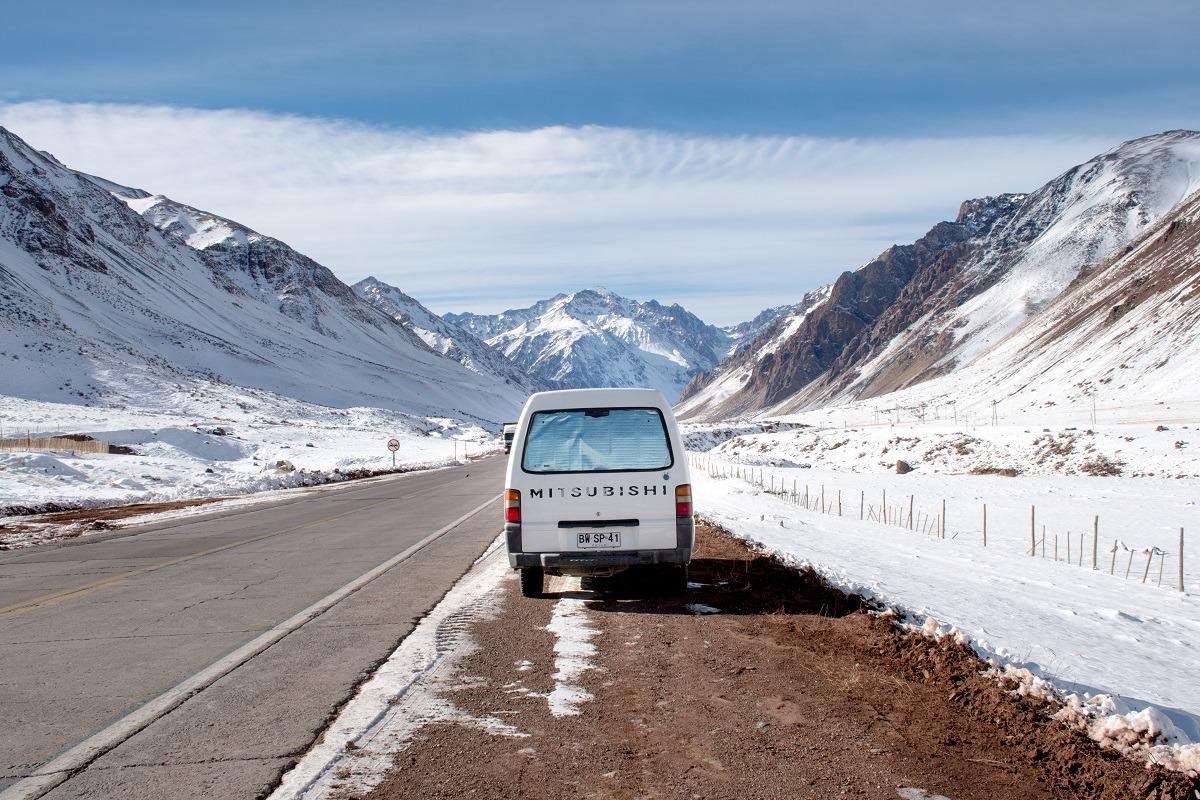
3. GET A RUT
What is a RUT??
Well, it turns out that to be able to buy a car in Chile, you’ll need a Chilean tax number, called a RUT (Rol Único Tributario).
The tricky part is, you must be a resident of Chile to obtain this number. You could be, if you study or work in Chile, but as a traveler you are clearly not. 😊
Luckily, there’s a way around this. All you need to do is find a Chilean “sponsor” (with a permanent residence permit), who assures you have an address at their place.
But how to get a sponsor?
If you have friends or relatives in Chile, this is great. Otherwise, you can ask for the help a hostel, an Airbnb owner or a Couchsurfing host.
But even if you can’t find anybody, there’s a solution for you. Suzi Santiago (the company I mentioned before) can officially assist you. Yes, how convenient is that?
Somebody from Suzi will go with you to the notary (don’t forget to bring your passport) where they’ll do all the paperwork for you. You’ll only need to sign a document and give your fingerprints.
Wait, what?
Yep, welcome to Chile. Notary offices here still function in some ways that seem from the 80s, with antique typing machines scattered around and people fingerprinting documents. 😉
Anyhow, the process is super easy and in an hour or two, you’ll be able to pick up your RUT at Suzi Santiago. The cost of their service is around $90.
By the way, Suzi Santiago doesn’t just offer you assistance in obtaining a RUT, but can also help you with the whole process of buying/selling a car and planning your route. They sell vehicles to travelers as well and make full conversions.
We were really satisfied with their services. We chose their full package for around $280, where in addition to obtaining a RUT, they arranged a mechanic examination, helped with transferring the title of the car, provided international insurance and would have also helped with selling the car if needed. We were invited to a 4-hour long route planning session where they showed us many “must-see” places in South America, proposed a route and gave us many tips for a perfect overlanding experience.
Oh, and one more cool thing – in case of any problems on the road or while crossing borders , you can always call them and they’ll deal with the border patrol officers. Gotta be honest, they can be a pain in the ass sometimes.
Getting a RUT by yourself?
In this case, the process will be slightly different:
- you must first go to the Servicio de Impuestos Internos (SII) to pick up form no. F4415.1.
- With that, you go to a notary, where they take you through the process and you’ll fill out the form with the sponsor (the notary at the Pedro Valdivia subway station in Santiago is used to dealing with foreigners, so I’d advise you to go there),
- then you have to go back to an SII again. You submit the forms and wait while they set you up with your RUT number (which you then have to print). The RUT itself costs only about $6.
4. GARAGE CHECK
Ok, you got your RUT and now it’s action time! Schedule a garage check (or two, if needed). There are many scattered around in Santiago, the one we kept returning to was a Goodyear garage.
Why? It looked modern (believe me, we’ve been to some dodgy garages as well during our 6-month travel), the service was quick and professional, a guy spoke broken English and the prices were fair. Bojan knows a thing or two about car repair and he confirmed they were honest and didn’t try to make up things just to earn some extra bucks.
The usual price for a car inspection is around $40 and you’ll receive a full report where all necessary and recommended repairs, with approximate prices, will be written (that is, if there’ll be any).
Depending on the outcome of the garage check, final price negotiation with the seller may follow.
5. TRANSFER OF THE TITLE
Now is the moment that you’ll finally buy a car in Chile! 😀
For the transfer of the title, you’ll head to a notary again.
Don’t forget to bring your passport, RUT and cash for the taxes (tax for a car title transfer has to be paid in cash). The notary tax is around $70 and the fees are 1.5% of the sale price (or the value of the car – check which one is cheaper).
The seller will need to bring the following documents to transfer the ownership of the car:
- Their Padron (Padron is a certificate of ownership)
- Their RUT
- Permisio de Circulacion (certificate of paid road tax, renewed once per year in March for all cars)
- Revision Tecnica (safety certificate that includes a certificate of the emission gases)
- SOAP – Certificado de Seguro Obligatorio (obligatory Chilean third party insurance, also renewed yearly in March)
- Certificado de Multas (it confirms that there are no fines on the car (i.e. highway tickets,…) connected to the plate number))
- Certificado de Anotaciones (a certificate that shows correct registration of the vehicle)
Certificado de Multas and Certificado de Anotaciones have to be issued on the same day as when you will do the title transfer at the notary.
The notary will prepare 3 documents that you and the seller will have to sign (and put fingerprints on).
PRO TIP: Some notaries will only prepare the “compraventa” (contract). If you need (and I’m sure you will) the other two documents, tell them in advance to prepare those two as well.
DOCUMENTS
- Compraventa (contract of sale)
When you sign the contract, the notary will send it to the Registro Civil, where they will change the Padron (Certificate of ownership) to your name. Due to unknown reasons, this takes a few weeks when a foreigner is buying a car. 😀 The Original Padron is then sent to the address on your RUT.
But no worries folks, the good news is that you can print out your (temporary) Padron at ANY Registro Civil in Chile. It costs approx. 3$ and it only takes a few minutes.
PRO TIP 2: When you do get the Padron, find the nearest copier and ask them to laminate it. For another unknown reason, border patrol officers prefer it that way, since it looks more “official” than just a piece of paper. 😊
- Authorization (authorization from the previous owner that you have the right to use the car and go across borders while waiting for your Padron to be finalized in the coming weeks)
Since you won’t get your Padron immediately, you’ll need this document and will have to show it at every border. You may also need it if you have to obtain insurance for the car and a Revision Tecnica before your Padron is ready.
- Declaracion Jurada
This is perhaps THE most useful document of all. Omg, we cherished it like it was golden.
This document allows you to take a Chilean car across the border as a foreigner with the commitment you will return the car to Chile in 180 * days.
* these 180 days are supposedly not checked at all and people have been travelling for a year or more outside of Chile with a Chilean car. I really don’t know if any (and how big) fines apply, so I can’t swear you’ll have no problems. 😀 Perhaps ask around in FB groups – somebody has experience in this for sure.
However, do NOT stay in one country (other than Chile) more than 90 days in a row, since this IS illegal.
Congrats, you’ve just managed to buy a car in Chile!
6. PAY FOR THE VEHICLE (yay, you are the owner now! )
Ok, this is kind of a necessary step. Bummer, right?! 😛
Anyway, it has to be done. All you’ll need is a bank account number and perhaps some additional info from the seller – check with your bank.
From our own experience – when buying a car from fellow Europeans, the process of transferring money took less than a day. When we sold the car to a Japanese couple, it took a couple of days.
In the meantime, the seller will probably keep either the car or the keys – that’s up to you to discuss. 😊 They have to make sure you don’t run away with the car you haven’t paid for yet, after all.
When payment is received…don’t forget to make a toast with them!
At this step, the seller should give you all the necessary documents as well:
- Their Padron (and RUT, just in case)
- Permisio de Circulacion
- Revision Tecnica
- SOAP
- International insurance (if they have one)
7. MAKE NECESSARY REPAIRS AND UPGRADES IF NEEDED
If a garage check showed that the car needs repair (or perhaps regular yearly maintenance), it’s best to do it before you hit the road.
This way you’ll avoid getting stuck somewhere in the middle of the nowhere, cursing why you haven’t repaired that stupid thing in the first place.
If you have to convert your vehicle (installing a bed/kitchen/insulation/solar panels/etc) Suzi Santiago can help you or you can do it by yourself. In the latter case, you’ll need a place (an Airbnb yard perhaps?) and proper tools.
The best store in Chile where you’ll find everything (also camping equipment) is Easy. The biggest in Santiago is in La Reina mall.
Here’s a map of all the places in Santiago you will probably go when buying a car! Yes yes, you’re welcome 😉
8. MAKE SURE ALL DOCUMENTS ARE UP TO DATE
Two important documents, the Revision Tecnica and the Permisio de Circulacion, are valid for one year and Permision de Circulacion has to be renewed every March. Only in March. A whole country.
Why does Chile have this specific rule? I sure as hell have no idea. 😀
Anyhow, if you need to do a technical inspection, you can do so in almost every city in Chile (at the so-called PRT – Planta de Revision Tecnica).
They are quite thorough and our poor Pisco didn’t make it the first time! We had to make some additional repairs before he finally “passed the test”.
The Revision Tecnica costs around $17 for a van (even less for a car). If your Revision Tecnica expires when you are somewhere out of Chile, they will let you into the country anyway. Immediately when you return to Chile go to the first PRT and get a new Revision Tecnica.
To obtain a new Permisio de Circulacion you will need the following documents:
- a previous Permision de Circulacion (one that will expire),
- a valid Revision Tecnica (and the emission certificate that comes with it),
- a Padron (yours or from the previous owner if you do not have one),
- obligatory insurance for Chile.
This Permision will cost you around $55 and can be obtained from the shipping containers (yes, shipping containers) that will be placed around the whole of Chile in March.
Next to these containers, there will be a booth where you can buy obligatory insurance (SOAP). This one costs about $20 (for a van).
Besides these 3 documents, you will also need international insurance for the vehicle (if you plan to travel outside Chile). You can get it from this website and simply print it out. The cost was around 130$ for 6 months.
Now, you may be lucky and you’ll buy a car in autumn and sell it before March – in this case, you’ll avoid all these costs, yay!
If you are like us (yep, bought a car in March)…you’ll have to get all of them before you hit the road.
9. GIVE A NAME TO YOUR TINY HOME!
That’s the most important step of all! 😀
Your new vehicle will be your best travel companion, your house and your transport during the adventure that awaits you!
They have their own soul, I’m telling you.
When we first met our Mitsubishi L300, the couple who owned it told us it was a girl.
Somehow, we didn’t feel that way. We immediately felt that we got a young (not perhaps by miles but by the soul), playful, mischievous puppy who couldn’t wait to go on new adventures. And a gift that waited for us inside, was the decision-maker.
We named him Pisco. 😀 (if you don’t know what Pisco is, Google it NOW! 😉)
10. PICK UP YOUR PADRON
The only left thing to do is pick up your padron (Certificate of ownership) when it is ready. Remember, original Padron is sent to the address on your RUT, but you can print out your (temporary) Padron at any Registro Civil in Chile.
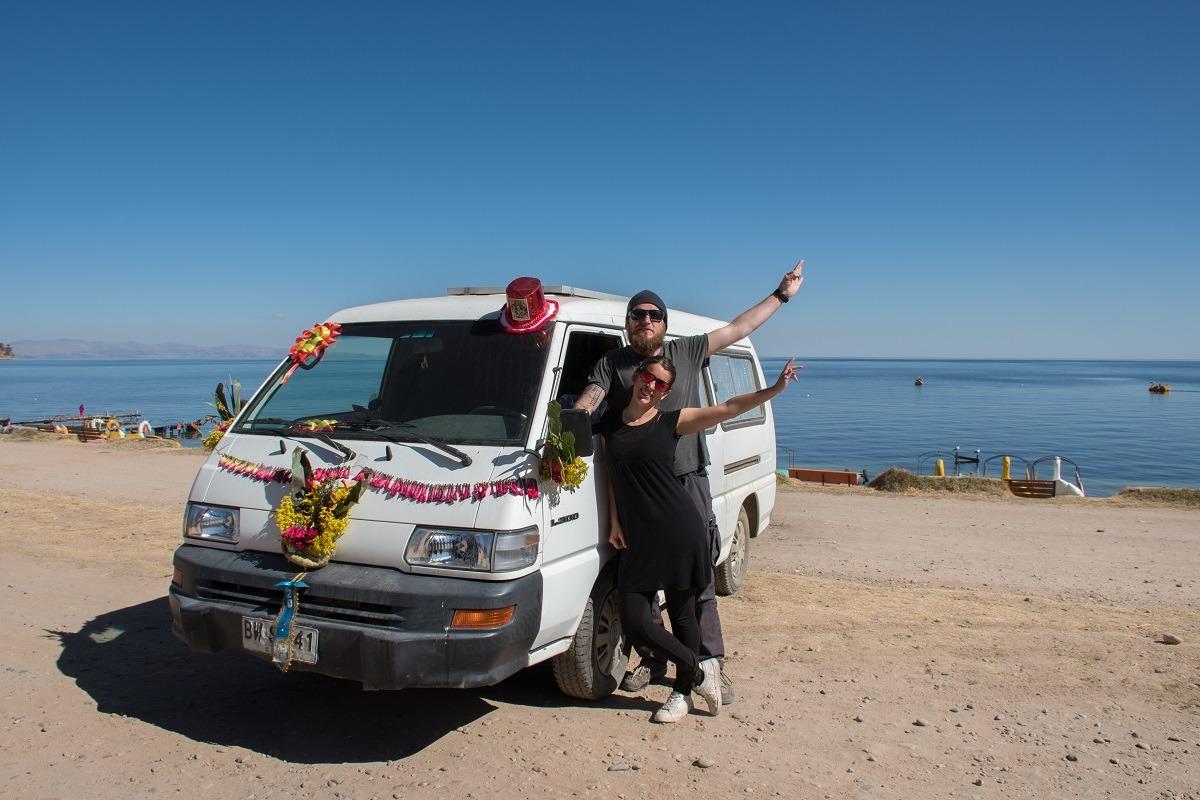
TIPS FOR CROSSING BORDERS
During our 6 month journey around South America, we visited only 4 countries, but we crossed borders 12 times. So, we have learned a few tricks along the way. 😉
Borders in South America (Chile, Argentina, Peru, Bolivia) consist of two office complexes (border controls) – one on each side of the border and in between is usually a few kilometres long “no-man’s land”.
Each border control consists of three offices – Immigration Office, Office where you handle the car papers (sorry, forgot the name!) and customs. Always have a pen with you, since you’ll have to fill out a bunch of forms.
ENTERING CHILE
When you enter Chile (by plane or overland), you receive a slip from PDI (Policia de Investigaciones), which you have to keep safe! When you leave the country you have to show this PDI to the Immigration Office.
Chile has ridiculously strict rules about the food you can bring into the country.
This resulted in many even more ridiculous events that took place in front of the border – like, us trying to eat enormous amounts of fruit or cooking lunch with an amount of tomato sauce that would suffice for 5 people. Or having an endless debate on whether we can bring back Chilean honey, bought in Chile, back to Chile if there’s no “made in Chile” written on it. Spoiler alert, you can’t.
Shortly, you are not allowed to bring in:
- Any fresh fruit or vegetable
- Anything that can grow (rice, corn, beans, raisins with seeds, wheat,…)
- Dairy products (although they’ll let you have unopened cheese and milk), eggs, honey
Empty the trash before the border, they’ll check it as well.
If you aren’t sure whether something is allowed or not, just circle “declare” on the form. Then you’ll have to show that stuff and the “nice” lady will decide whether it is allowed or not to bring into Chile. If you don’t declare anything and they find something you shouldn’t have, you may receive a fine!
They took my precious honey (of course they did), raisins (she was opening them to check for seeds, goddamnit) and threw the trash away (that was beneficial, at least).
My name was written down three times in the special database. I like to think I’m on a special blacklist for smuggling a handful of raisins with seeds into Chile. What a badass I am. 😛
GOING OUT OF CHILE
- When you leave Chile, you have to show your Padron, Declaracion Jurada and (until you have your own Padron) Authorization from the previous owner.
- At some borders, there might be slight complications, especially due to lack of knowledge of border patrol officers (Well, don’t tell them that of course. ) But if it happens that they claim you cannot leave the country as a foreigner with a Chilean car, despite having a Declaracion Jurada, politely show them an excerpt from the law stating that you can leave the country if you have this document (link to the law is here, Article 17.2.3 ). We recommend you have one copy of this law with you, with the statement highlighted. You may mention that you have gone out of Chile at other border crossings without a problem (this helped in our case when they were trying to complicate things at the border crossing on the way to Mendoza, Argentina).
- There are reports that borders north of Santiago like to give trouble to foreigners sometimes, but let you through at the end. However, going from Chile straight to Peru or Bolivia may not be possible – simply because of those officers that are not following the law and you just can’t do anything about it. Or, if you really have a lot of time, you can try camping in front of the border and maybe they’ll give up after a few days. 😉
- Don’t let them take your original documents, especially not the Declaracion Jurada (at some border crossings they do that). To avoid this, make colour copies of the document and show them those (keep original safe).
- Besides laminating the Padron, it is a good idea to do the same with your RUT and Revision Tecnica.
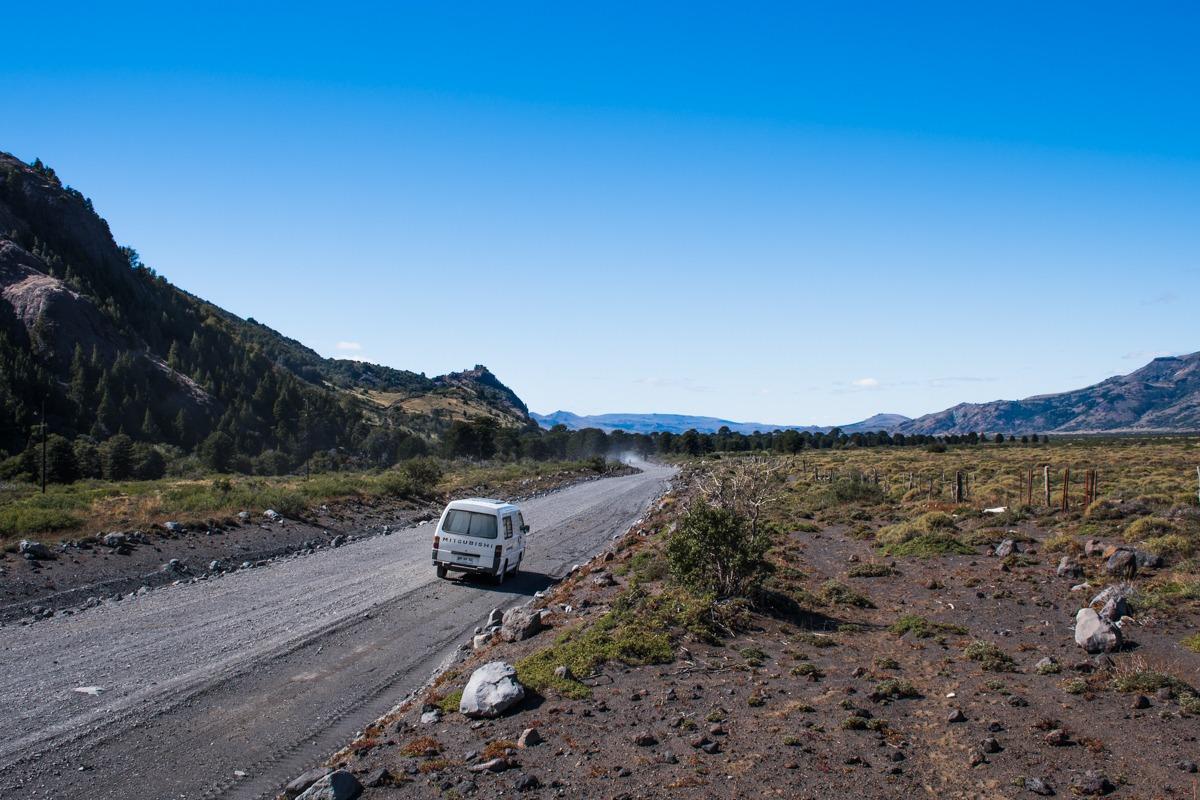
Oh, ok, now I think we have covered it all. 😊 We hope that this will be of help when you decide to buy a car in Chile! 🙂
Do you have any questions, suggestions, information that we forgot to add or that was not clear enough? Let us know in the comments below or write to us!
Oh, and we’d be thrilled to know what you named your new travel companion! 😉
Happy Vagabonding! 🙂
And don’t forget to save this for later!


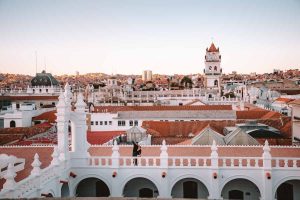
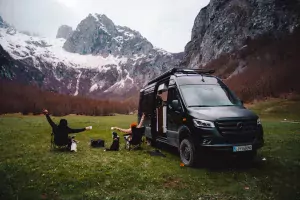

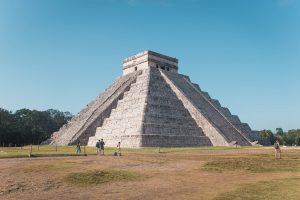

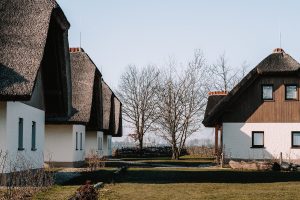
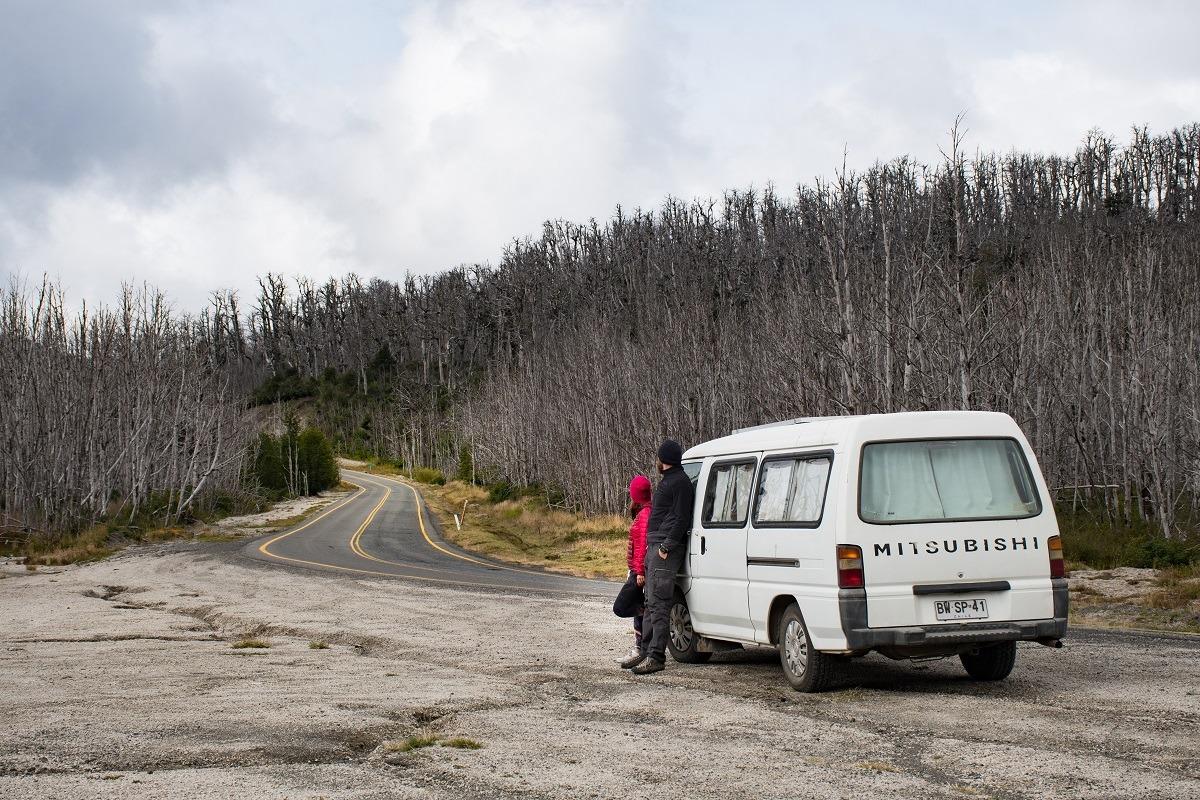

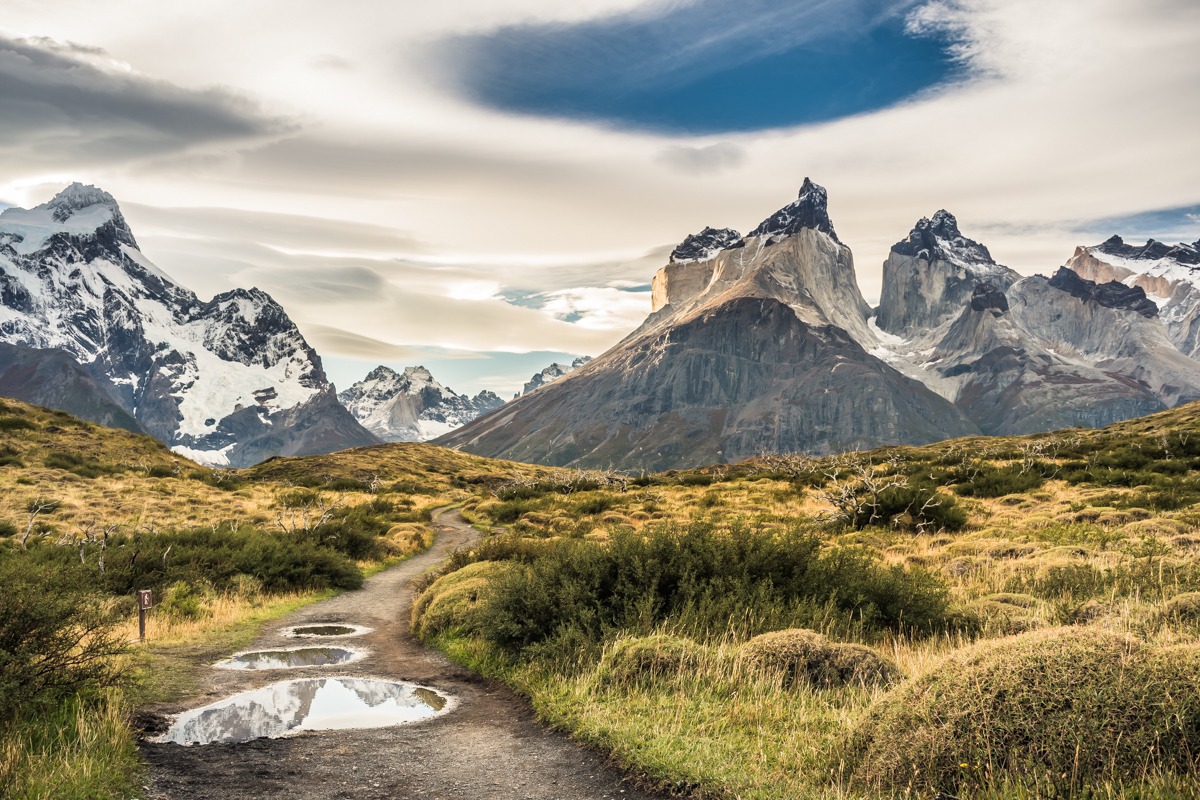
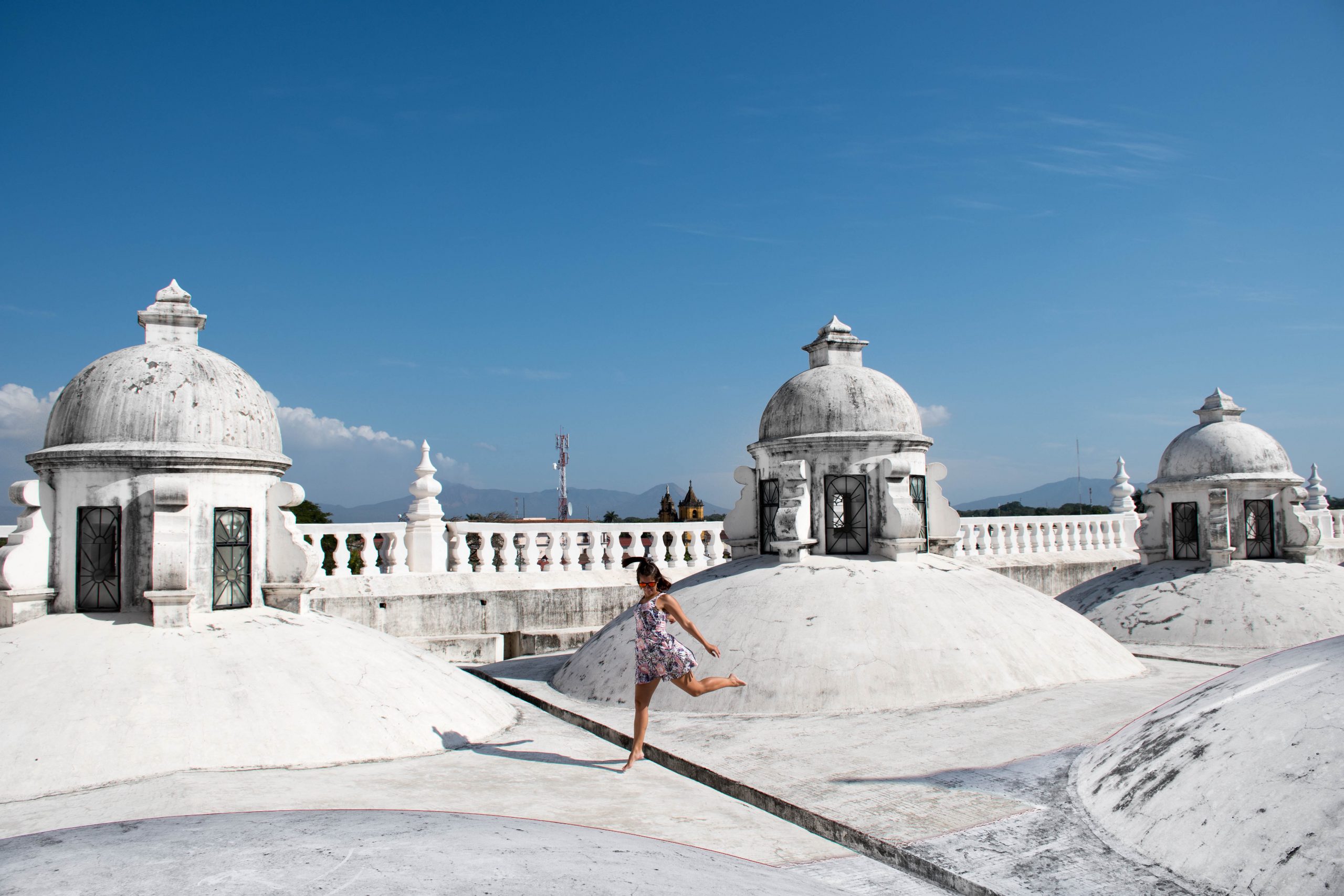

12 Responses
Hi there! Thanks for all the useful info! What’s the link for the international insurance? It doesn’t seem to be added anywhere. Thanks and happy travels!
Hi! You’re welcome 🙂 If you’ll have any questions, feel free to write to us, we’re happy to help. And the link is now working, thanks for pointing that out! Happy Vagabonding 🙂
Hi guys. Very helpful article thanks. We planned to buy a car in 1st of may. We found it, I’ll make the pre contract for agreement. Following your steps. We’ll probably work with suzi santiago because it seems to be really helpful, and the people that we’re buyin from work with them too. We still have a question that I can’t get the anwser from them now. from the moment that the car is sold, transfer title, rut, etc are done, we’ll receive a temporary padron, waitin for the official one. Suzi Santiago seems to send the official one by email later. If we want to go to peru, do we have to wait until the official one ? Or can we go with the temporary ? After those readings, it seems easier to go to peru or bolivia through Argentina first, cause of the control borders. But can we manage to cross argentina bolivia peru with the temporary padron ? Thanks a lot for helping us 🙂
Hi Jerome!
I’m happy to hear you found a car, I’m sure it will be an awesome adventure. 🙂 Yes, I would advise you to go to Bolivia through Argentina, since it is highly possible that Chilean officers at the border won’t want to let you through (directly to Peru/Bolivia). You can go from Argentina to Bolivia with what you call “a temporary padron” (this is acutally padron from previous owner), but in this case, you absolutely need Autorizacion (the document I mentioned in the post) with you. On Autorizacion it is clearly stated that you are allowed to take car to any foreign country, especially to Argentina and the countries of South America. However, it is always less hassle/smoother process if you have your own padron, so if you later have any chance by picking it up, it’s just easier for you (but as I said, without it you can also cross borders). You don’t need to wait for the letter – once your padron is ready, you can get it at ANY Registro Civil in Chile. Hope this helps!
Was wondering what the difference was between what you paid for and what you sold the vehicle for? Thanks in advance
Hi! We sold the van for perhaps US$500 less than our buying price. But when we bought it, we did invest and upgrade it – we installed solar panels, bought a new fridge, installed a few wooden cabinets, and bought some minor things. So all in all, let’s say a difference was around $1000-1200. 🙂
Hi, this is such a useful article, thanks! I was just wondering what you did about collecting your Padron, assuming you travelled with your temporary one? Did you have your sponsor post it to you somewhere?
Hi Anisha! Thanks for the comment 🙂 No, you don’t need the “original” one at all – because the one you print out the Registro Civil in any bigger town is equivalent to the original. I guess we picked up our “main one” from the sponsor once we returned to Chile lol 🙂 But sure, you could have your sponsor send it somewhere too.
I found the information provided in this blog post to be very organized and concise, which enabled me to easily understand how to find a used car.
Happy to hear that! 🙂
THank you for this blog, so useful!!!
I will definitely follow ur blogs!
Thank you, you’re welcome! 🙂